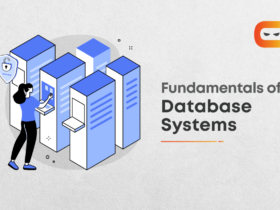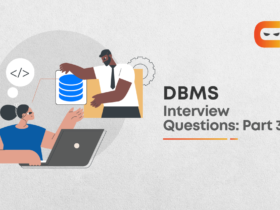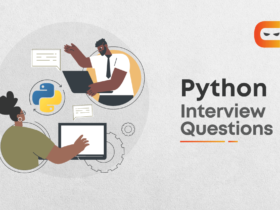We know that back-end web development refers to server-side development. It explains behind-the-scenes activities and actions taking place on a website. Since back-end development accentuates behind the website activities, similarly, a back-end developer focuses on databases, scripting and the architecture of the website.
The four key ingredients that a back-end developer works with includes the following:
- Web Development Languages: Being a back-end developer or if you want to become one, its essential to get proficient in the below mentioned languages.
HTML: Hyper Text Markup Language helps you make the layout and structure for the website. Since the language is dynamic, it allows you to create a dynamic website using less code.
CSS: Cascading Style Sheets can only be used by a developer to style a website in which the style sheet language describes the layout. Both CSS and HTML work hand in hand to add colours, background, layouts, font sizes and more.
Java: This most popular programming language is used to develop website content, games and various applications. This language is portable and can be run on multiple software platforms.
JavaScript: This programming language is used to add interactive elements to the website.
Python: It is the easiest programming language that can be used to create a framework for any type of website. Because the language has a simple and straightforward syntax making it easy for the developers and explain to the users.
SQL: It is a database query language that is used when your website is computing large amounts of data which uses it later to cater your website to the target audience.
- Database & Cache: To become a successful back-end developer, it is crucial to have a strong proficiency in various Database Management Systems (DBMS). The important ones include the knowledge of MySQL, MongoDB, Oracle, SQL Server and Redis. To comprehend the caching mechanism, you need to be acquainted with Varnish and Memcached.
- Server: As much as a good background in Linux helps in administering the servers, it’s important to have an adequate understanding of Apache, Nginx, IIS servers and Microsoft IIS.
- API (REST & SOAP): SOAP stands for Simple Object Access Protocol whereas REST stands for Representational State Transfer. The main idea behind designing SOAP was to ensure that programs built on different platforms and programming languages could exchange data in an easy manner. Any web service that is defined on the principles of REST can be called a RestFul web service. A Restful service would use the normal HTTP verbs of GET, POST, PUT and DELETE for working with the required components.
Now that we have explained the core of back-end technology, let’s talk about the responsibilities and initiatives that a back-end developer undertakes:
- Understanding the goal of the website and come up with effective solutions.
- The storing of data and ensuring that it gets displayed to the right audience.
- Developing and integrating payment gateways like accepting data, securely storing that info and making changes to the payment.
- Managing the APIs that work and perform across devices.
- Streamlining and designing the architecture of a system and data science analysis.
- Back-end developers should have the skill for implementing algorithms and solving system-related problems.
- Backend developer also needs to involved in building frameworks or the architecture to make it easier to program against.
Skillset of a Back-end developer:
- The database, Server, API, etc.
- Back-end developers develop an application that supports front-end. It should also provide support, security and content management.
- Back-end development can be offered as an independent service in the form of BaaS (Back-end as a service).
- The back-end team may need to create an application around the front-end and support it. Moreover, they need to make sure that the website opens up and functioning properly.
Top trends in Back-end Development in 2020
- Security: As new web applications generate even more data, the risk rises. Back end developers will have to make sure to build secure systems from the ground up and encrypt data at every level.
- Blockchain: This technology is beyond cryptocurrency because it can be a valuable security solution to the aforementioned data breach problem. Companies are increasingly turning to blockchain solutions for decentralised data. While blockchain can be too complex a solution for sites with a low volume of data, if you’re collecting a lot of sensitive user data, blockchain could be the answer to your security concerns.
- Going Serverless: This one might not be such good news for a lot of back end developers specialising in server provisioning and maintenance, but there’s an increasing trend towards cloud companies that offer Function as a Service (FaaS) or Backend as a Service (BaaS) solutions for development. Add to this trend the move towards managed serverless applications like AWS AppSync or Auth0, and front end devs can now hook into back end features without any knowledge of back end coding.
- Data Science: An increasing number of companies are employing data scientists to interpret the data they collect and provide actionable insights. This doesn’t mean a software engineer has to be a data scientist, or that a data scientist has to be a software engineer. What it does mean is that back end developers need to find ways to turn the data they collect and store into a product that can be used by data scientists.
- GraphQL: It is a Facebook-developed query language that helps load data from the server-side to the client-side. It’s far more sophisticated than REST, with the ability to aggregate data from multiple sources and return multiple resources with a single request.
Salary
According to Ladders.com, a web developer often specialise in one of three areas — front end, back end, or full-stack — each responsible for either how a website looks, how it runs, or how both. They can develop, design and programme code for user-facing sites, web-based databases and more. While the average starting salary is sub-$100,000, skilled professionals with experience and vast knowledge of web development often earn much more.
According to indeed.com, the average salary for a Back-End Developer is ₹6,95,673 per year in India. Salary estimates are based on 1,150 salaries submitted anonymously to Indeed by Back End Developer employees, users and collected from past and present job advertisements on Indeed in the past 36 months. The typical tenure for a Back End Developer is less than one year.
To learn about our courses, click here.















Leave a Reply